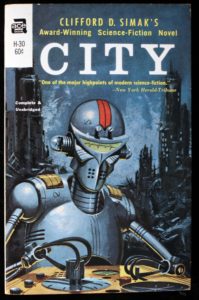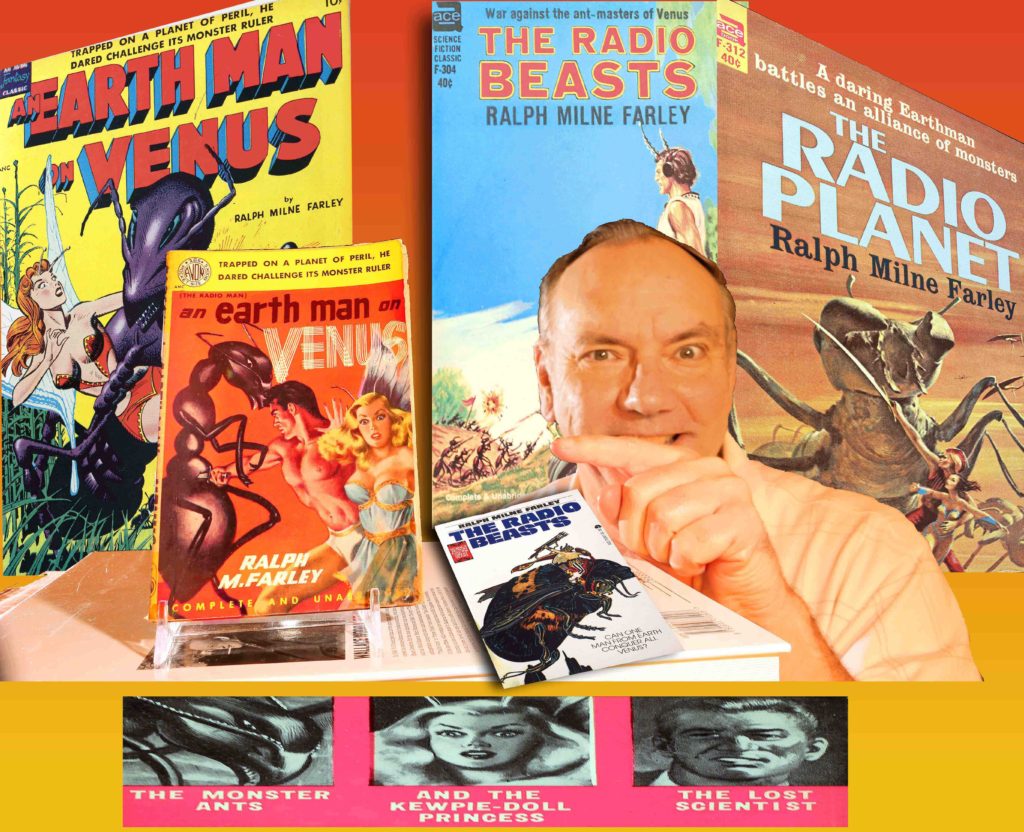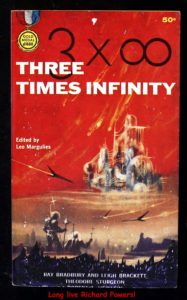I Buy Science Fiction Paperbacks
Contact Lewis Forro 757 797 0029 leadersreport@protonmail.com
Clifford D. Simak’s famous classic City with the painted cover by Ed Valigursky. I first read City as a teenager one summer at my grandmother’s house in Tarrant City, Al.
I must have been at just the right age because City made a lasting impression on me. After all these years it’s still my favorite science fiction novel.
I bought the 1950 Avon comic book An Earthman On Venus (far left in photo)in the early 1980s at Ron Pussell’s Redbeard’s Book Den in Newport Beach, CA. I later learned there was an Avon paperback from 1951 but l never found a copy to buy until over 30 years later in Kingston, NY. The copy shown here is in rough condition but in 2020 I managed to buy a high grade copy from a collector in Richmond, VA for a bargain price of $20. Also shown are later Ace reprints The Radio Beasts and The Radio Planet.

The anthology Impact-20 and the H.G. Wells novel The Time Machine both have painted covers by the famous Richard Powers. The Forever Machine is one of the few paperback covers drawn by comic book artist Wally Wood. Richard Matheson’s famous post-apocalyptic novel has been reprinted many times and adapted into three movies so far.
To most people this paperback anthology edition of Three Times Infinity, 1966 isn’t remarkable. But it resonates with me for sentimental reasons involving a certain science fiction cover artist. In the late 1960s I was visiting Globe Book Mart which was the only used bookstore in Savannah that carried old back issue comic books and science fiction paperbacks. I still remember the owner Mr. Williams had a sign in his science fiction book section at the back of the store that read something like “Savannah’s largest selection of science fiction paperbacks.”
When I saw this book at the Globe one day I didn’t buy it but I was impressed by the psychedelic looking cover art. It isn’t signed by the artist and his name isn’t noted inside but over the years I kept noticing that many science fiction paperbacks in the 1960s had this same artistic style. Somewhere along the way I finally figured out who Richard Powers was.

It’s widely known among comic book and science fiction fans that the 1930s pulp magazine character Doc Savage served as an inspiration for the comic book character Superman. It’s not as well known that Philip Wylie’s hardcover novel Gladiator, 1930 also was another source of inspiration for Superman’s creator Jerry Siegel when he and artist Joe Shuster introduced Superman to the world Action Comics #1, 1938. Wylie’s superhuman character Hugo Danner had his own ‘fortress of solitude’ of sorts and referred to himself as “a man of iron” and so forth.
Wylie was sure Siegel did some borrowing from Gladiator because he threatened to sue Siegel in 1940 for plagiarism. We know for a fact that Siegel read Gladiator because he reviewed it in a 1930s science fiction fanzine he published. I first saw this Avon paperback version of Gladiator from 1949 at the San Diego Comic Con in the early 1980s and the seller mentioned to me that Siegel “went ape” when he read Gladiator. So even way back in the 1980s comic book fans were aware of the connection. Out of curiosity I always wanted a paperback copy of this book and was delighted when this high grade glossy copy was offered for sale in a paperback book collection being sold at Pulpfest in July 2018 for $3.00 each. The San Diego dealer wanted a lot more than $3.00 for his average copy almost 40 years ago.




